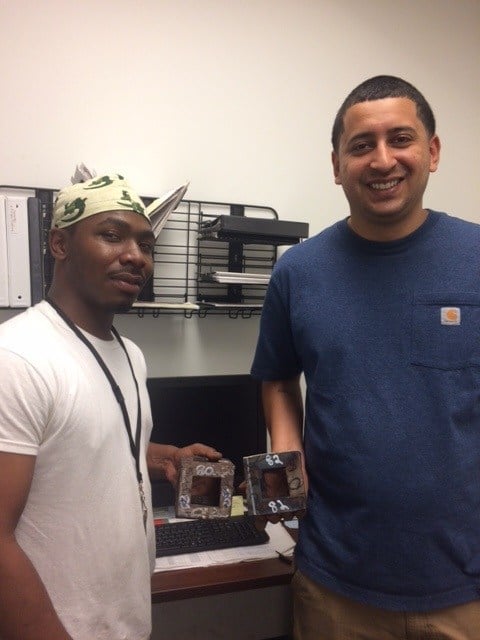Galveston College Welding program director James Love has a challenging assignment for students enrolled in his second semester class, Introduction to Layout and Fabrication.
Students are required to construct a 4-inch by 4-inch carbon steel cube with a precise 2-inch cutout on all six sides.
Love explained this intricate project gives him the opportunity to teach students how to create a layout plan with detailed measurements on paper, followed by transferring the layout from paper to the actual material.
Students learn about tolerances, which are the amount of error permitted on a project. On the cube project, a one-eighth-inch tolerance is accepted.
Students also learn how to make allowances for kerf lines, which are the amount of material taken off during the cutting process.
Take-offs are another critical factor where students are expected to accurately deduct the thickness of the materials in their calculations.
Students learn three different types of cutting processes and are given the choice of what cutting process to use.
Grinding follows to ensure a smooth finish and then pieces are assembled.
Students weld up all seams of the cube using one of four processes: shielded metal arc welding, gas tungsten arc welding, flux cored arc welding or gas metal arc welding.
Galveston College Welding program director James Love has a challenging assignment for students enrolled in his second semester class, Introduction to Layout and Fabrication.
Students are required to construct a 4-inch by 4-inch carbon steel cube with a precise 2-inch cutout on all six sides.
Love explained this intricate project gives him the opportunity to teach students how to create a layout plan with detailed measurements on paper, followed by transferring the layout from paper to the actual material.
Students learn about tolerances, which are the amount of error permitted on a project. On the cube project, a one-eighth-inch tolerance is accepted.
Students also learn how to make allowances for kerf lines, which are the amount of material taken off during the cutting process.
Take-offs are another critical factor where students are expected to accurately deduct the thickness of the materials in their calculations.
Students learn three different types of cutting processes and are given the choice of what cutting process to use.
Grinding follows to ensure a smooth finish and then pieces are assembled.
Students weld up all seams of the cube using one of four processes: shielded metal arc welding, gas tungsten arc welding, flux cored arc welding or gas metal arc welding.
